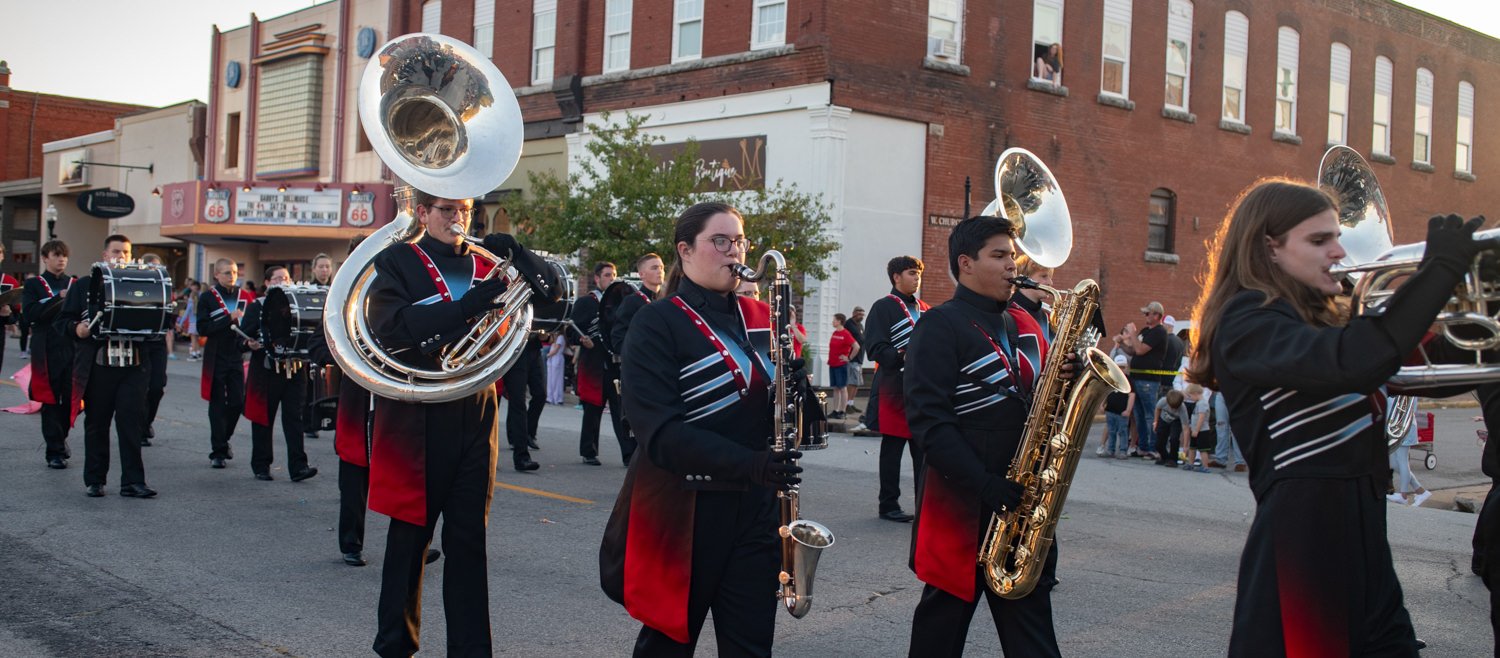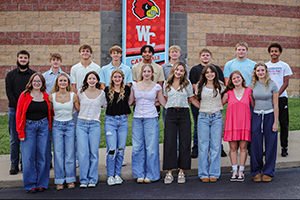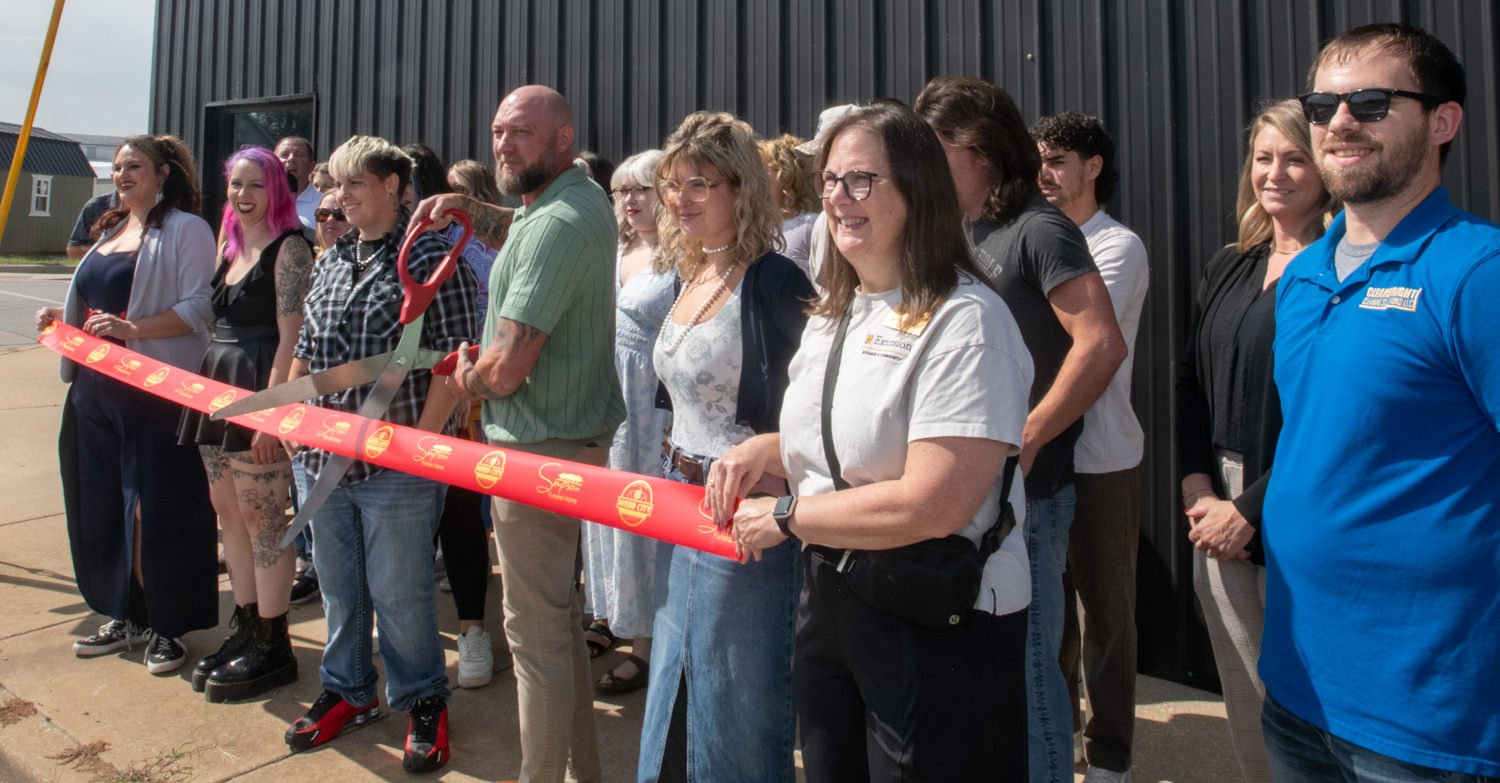
We’re continuing from where Jeanne’s Webb City timeline left off last week.
1882 – Alba was platted on March 24 by Stephen Smith and a man named Johnson. It was named after a man who operated a trading post (Alba’s Station) during the Civil War. The community consisted mostly of members of the Friends (Quaker) Church. The post office was registered under the name of Breckenridge from April 1856 to Jan 1860.
1882 – New businesses: M.M. Confectionery, Morris & Co. Clothing Store, and S.A. Brown & Co. Lumber.
1883 – Establishment of the Reynolds Post, G.A.R.
1883 – February, A fire burned the entire east side of Allen (Main) Street between Church and Main (Broadway) streets. The fire started in the Pacific Hotel and took out six other buildings.
1883 – 7 a.m. April 13, John C. Webb passed away from consumption at the age of 57. He was buried in the Harmony Grove Cemetery and later moved to Mount Hope Cemetery when it was established in 1906.
1883 – A slump in the mining business led to a drop in population as miners were getting discouraged and moving away.
1883 – Amos D. Hatten arrived in Webb City and purchased the Center Creek Mines from Granville Ashcraft. Hatten was a successful businessman. No slump in mining for him.
1883 – May, A twister hit Oronogo at 7 p.m. Two were killed and 33 were injured.
1883 – Webb City’s first opera house opened in the Middlewest Building, built by Lester & Aylor. The opera house occupied the second floor of the building.
1883 – E.A. Baker purchased the Webb City Hotel at 9 S. Webb St. and changed the name to The Buffalo House.
1884 – Feb. 29, The Leap Year Ball was put on by the young ladies of Webb City.
1884 – Dunlap, Columbia & Bradford Bros. opened for business.
1885 – Carterville’s paper, the Carterville Mining Review, by T.J. Sheldon and W.D. Sallee, was established.
1885 – Jan. 17, The temperature reached 17 below zero.
1885 – New businesses: W.F. Spurgeon Groceries, J.E. Magrader Groceries, Sheffer & Co. General Merchandise, Lowry & Dunlap Harness and T.J. Harrington’s Restaurant & Oyster Parlor.
1886 – April, Mayor William Hilburn, was elected and served until 1888.
1886 – Amos A. Cass arrived in Carterville and became a partner in Weeks Hardware Co.
1886 – Stewart & Matthews Lumber dealers opened for business.
1887 – Knights of Pythias was established on Feb. 2.
1887 – Amos D. Hatten and Otis J. Raymond built a block of buildings from 201 to 207 N. Allen (Main) St. with money acquired from mining industries. The block of buildings (the second brick building in Webb City, housed the post office, a dime store, clothing and hardware stores and a tin shop in the rear. Later becoming home to Humphries Department Store, the largest mercantile business in the area.
1888 – Feb. 29, Second Leap Year Ball was presented at the Webb City Opera House.
1888 – Peter McEntee elected mayor in April. Served 1888 –1890.
1888 – Dr. Lincoln Chenoweth and his wife, America Levina McNatt Chenoweth, moved to Webb City. He had graduated from medical school in 1887, and they had married July 10, 1887.
1888 – Nov. 8, Amos D. Hatten married Sadie C. Coyne (sister of Tom Coyne, Hatten’s business partner).
1888 – June 27, Alice McCorkle and Charles Morrow Manker married. Manker was Webb City’s first Republican mayor. He helped organize the Home Telephone Co. (aka Webb City Electric Telephone Co.). He helped organize the Merchant & Miners Bank in 1905.
1888 – A water system for Webb City and Carterville was built on Center Creek.
1888 – C.E. Matthews opened a huge lumber business.
1888 – The first police judge was Joseph Fetlers. Previously, the mayor had also served as police judge.
1888 – Ben C. Webb, husband of the future Jane Chinn died.
1889 – Dec. 26, Webb City’s status changed from fourth class to third class.
1889 – The volunteer fire department was organized under the leadership of Col. Henry Wonner and Tom Hayden. Before that, the city had used bucket brigades.
1889 – The Exchange Bank was organized by J.C. Stewart and his brother W.C. Stewart. It later became the National Bank at 108 N. Main St.
1889 – A.H. Rogers established a mule-drawn streetcar line from Webb City to Carterville.
1889 – John Dermott came to Webb City and became a mine operator.
1890 – April, T.J. Harrington, elected mayor and served until 1892.
1890 – Col. James O’Neill established the Webb City Water Works at a cost of $100,000 (against the advice of friends). He built the O’Neill Building at 9½ S. Webb St. to house the water works offices. The black stand pipe that held 120,000 gallons of water stood on the highest point, at Hall and Tracy streets.
1890 – Aug. 19, Dr. Charles Henry Craig and his wife, Lucy, moved to Webb City. He obtained his medical degree in 1887 and worked at the state prison after graduation.
1890 – Beginning of the formation of the Webb City Commercial Club.
1890 – The first Webb City High School commencement exercises were held with six graduates from Central School.
1890 – The Webb City Sentinel became a daily paper.
1890 – The building housing City Hall and the fire department was built at First and Allen (Main) streets.
1891 – Troup City filed for a post office to keep from being incorporated into Carterville. They were denied by authorities because of the name. They filed again under the name of Prosperity, and it was accepted.
1891 – James Van Hoose moved to Webb City.
1891 – The Newland Hotel opened in February.
1891 – The Commercial Club was organized with 140 members.
1891 – The organization of the Shakespearean Conversational Club.
1892 – April – C.M. Manker, Mayor.
1892 – W.C. Routzong moved to Oronogo and established the “Index” newspaper. He became the Oronogo postmaster in 1893 and justice of the peace in 1896 and was reelected 1898. He later became a notary public, city clerk, police judge and leader of Democratic Party. He served in the Civil War, receiving an honorable discharge. Busy man.
1892 – The Carterville Daily Journal was established by Barnes & Wallace on Fountain Street.
1892 – Finding of two adult mastodons and one baby in Carl Junction, thought to be at least 5000 years old.
1892 – Charles Manker elected as the first Republican mayor of Webb City.
1892 – Bank of Carl Junction founded.
1892 – Bank of Oronogo founded.
1892 – Central School expanded from four to eightrooms. West Side and Webster (the original) schools were built. The high school classes were moved to West Side.
1893 – A.H. Rogers discontinued the mule-drawn streetcar line and started the Southwest Missouri Railway by purchasing the Jasper County Electric and the Joplin Electric Railway.
1893 – Webb City’s first baby, daughter of Granville Ashcraft, Bernice Ashcraft graduated from high school.
1893 – Jane Webb (later to be Jane Chinn) married Daniel F. Stewart. They built a home at 302 S. Pennsylvania St.
1893 – Chicago World’s Fair. Lead from Webb City on display, acclaimed as one of the finest displays.
1893 – Murratta Drug Store began at 110 N. Allen (Main) St. Susan Marratta being widowed at the age of 54, brought her three children from Kentucky to Webb City and helped her 28-year-old son open a drug store.
1893 – The new four–room schoolhouse in Johnstown was completed in time for fall classes. J.W. Beddingfield was the first principal.
1893 – The Exchange Bank had a setback during the “Panic of 1893” due to loaning heavily to new mining companies. It experienced a short suspension until paper work was completed, but there was no financial loss.
1894 – April– J.J. Funk, Mayor.
1894 – New brick Central School was built in same location as the original wood frame Central School had been. High school classes were moved back to from West Side.
1894 – Cornerstone laid for the college at College and Austin streets. J.J. Nelson donated six acres.
1894 – 1904, the mines produced $23 million worth of ore.
1894 – Frank L. Forlow opened his law practice at 112 N. Allen (Main), and his business remained there until his death on March 28, 1927.
1894 – Labor Day established as a holiday.
1895 – Daniel Stewart passed away.
1895 – The Webb Corp was incorporated.
1895 – Carthage Courthouse completed.
1896 – April – F.M. King, Mayor.



